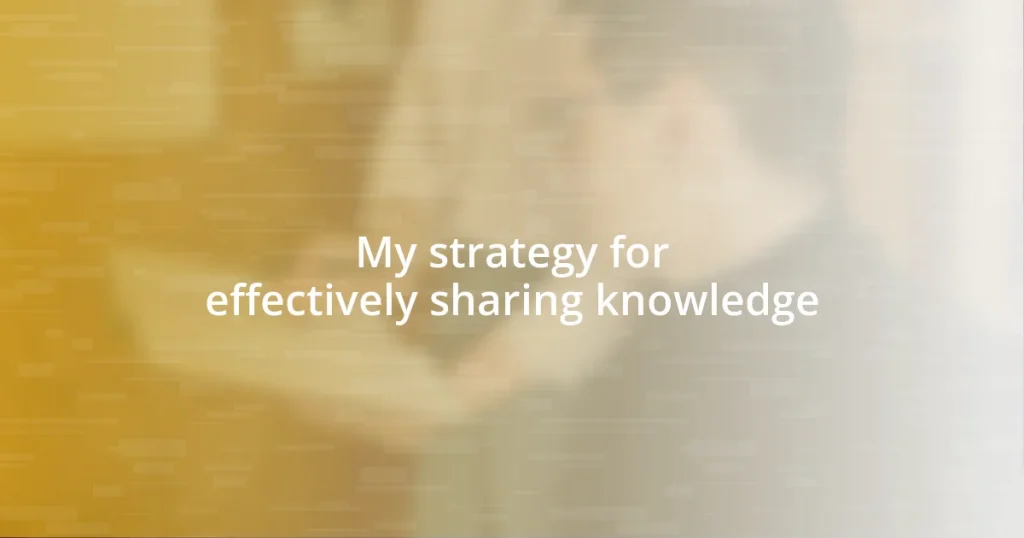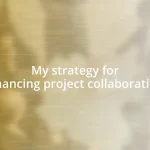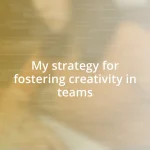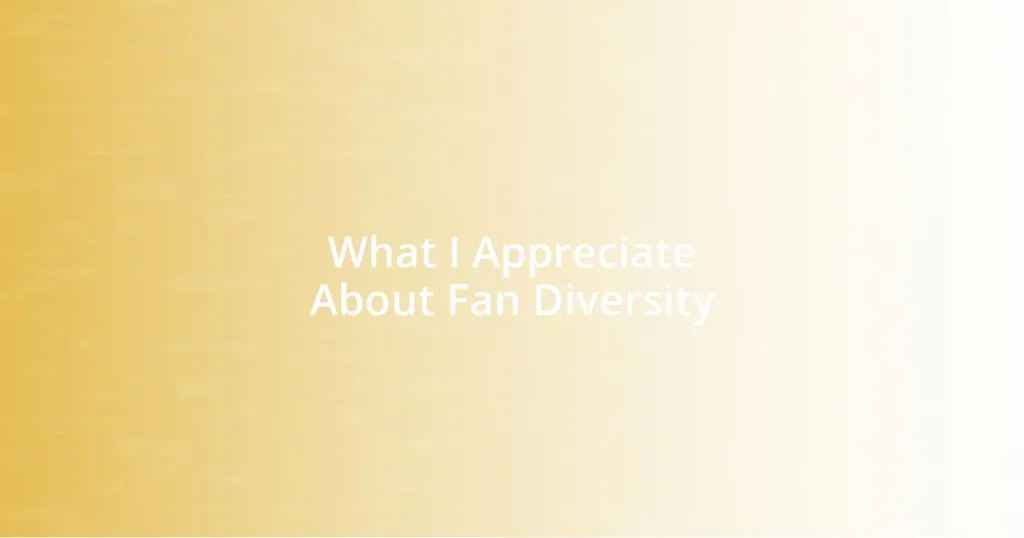Key takeaways:
- Effective knowledge sharing thrives on trust and openness, enabling greater collaboration and innovation among team members.
- Understanding the target audience’s demographics, interests, and communication styles is vital for customizing knowledge-sharing approaches and ensuring engagement.
- Leveraging diverse methods and technologies, including multimedia and collaborative tools, enhances participation and enriches the knowledge-sharing experience.
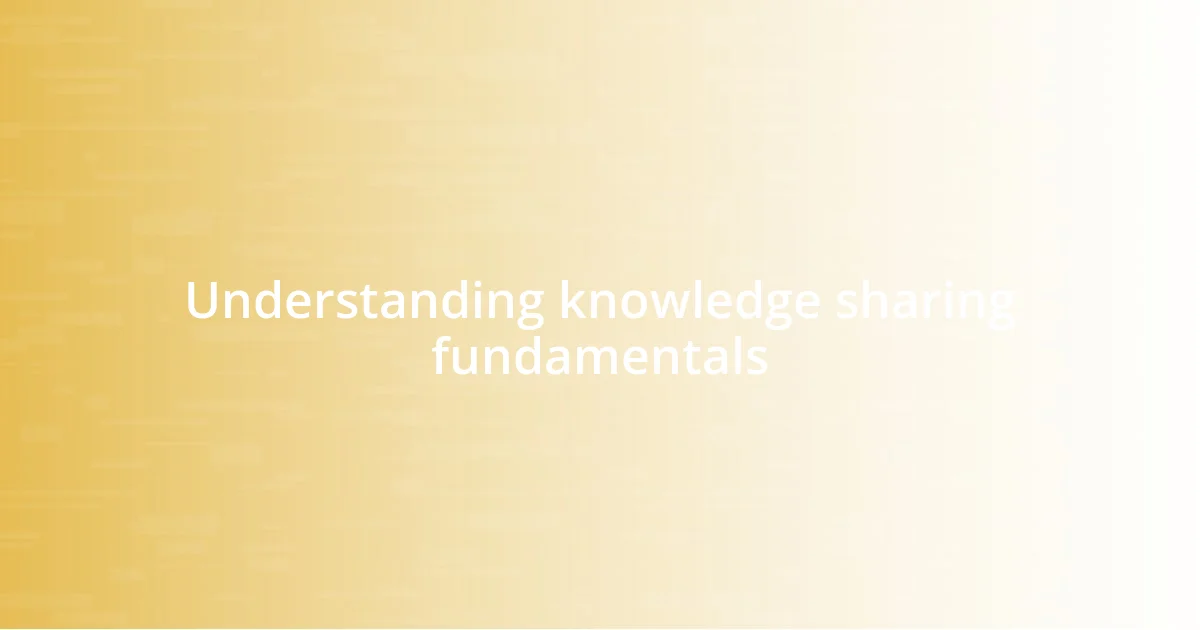
Understanding knowledge sharing fundamentals
Understanding the fundamentals of knowledge sharing begins with recognizing its value. I remember a time in my career when my team was struggling with a new project. We had different insights but didn’t share them, which created frustration. Once we started discussing our perspectives openly, things clicked into place—suddenly, we were a well-oiled machine. It made me wonder: How many opportunities for growth are we missing simply because we hold back our knowledge?
Effective knowledge sharing is built on trust. In my experience, when team members feel safe to express their ideas and admit their shortcomings, collaboration thrives. There was a moment when a colleague of mine bravely shared an unconventional approach, which initially seemed risky. However, it ended up being the breakthrough we desperately needed. Don’t you think that fostering an environment of openness can lead to such unexpected yet rewarding outcomes?
Moreover, understanding the various forms of knowledge is crucial. There’s explicit knowledge, which is easy to document, and tacit knowledge, which is more intuitive and personal. I once had a mentor who combined these two types perfectly, mixing documented processes with her unique insights. How often do we overlook the wisdom in our own experiences? Integrating both can enrich the sharing process, leading to a deeper understanding and more innovative solutions.
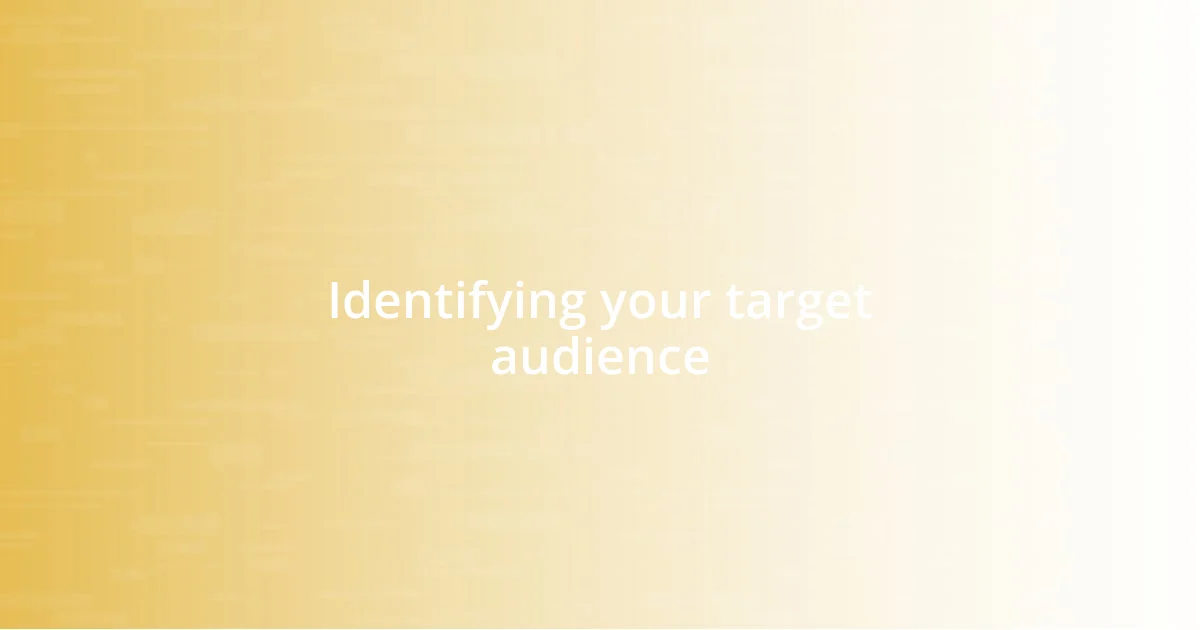
Identifying your target audience
Identifying your target audience is essential for effective knowledge sharing. I recall a project where we assumed we understood our audience’s needs, only to discover later that we were completely off-base. This taught me the importance of really digging into who we’re communicating with — their backgrounds, interests, and specific challenges they face.
To do this effectively, I recommend considering the following aspects:
- Demographics: Age, profession, education level.
- Interests: What topics resonate with them? What do they seek to learn?
- Pain Points: What challenges or gaps in knowledge do they experience?
- Communication Styles: Are they more formal or casual? Visual or text-oriented?
- Feedback Mechanisms: How can you gather their thoughts and adapt based on their responses?
By being open to understanding these elements, you can tailor your knowledge-sharing approach, making it more relatable and effective. In my journey, taking the time to know my audience has resulted in more engaging and productive conversations. It’s this connection that ultimately fosters a wealth of shared insights.
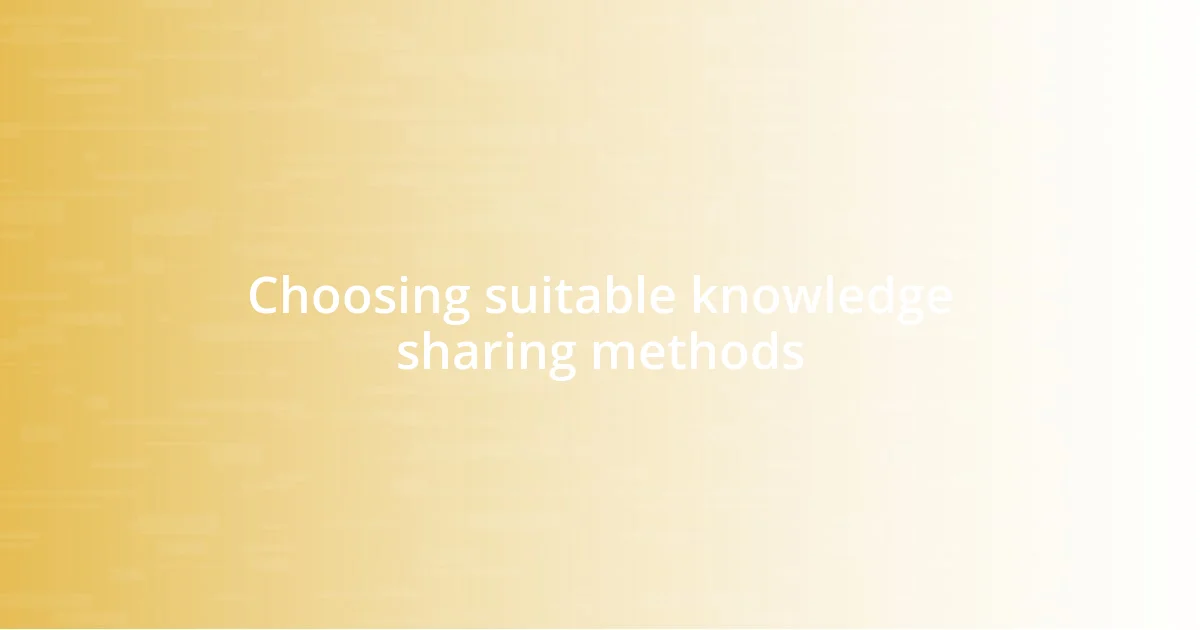
Choosing suitable knowledge sharing methods
Choosing suitable knowledge-sharing methods requires a thoughtful approach. I recall a time when I opted for a group workshop to share insights on a new tool we were adopting. While the idea seemed promising, I realized too late that many participants felt overwhelmed and preferred one-on-one guidance. This experience taught me that understanding how different individuals absorb knowledge is crucial to choosing the right method.
Different knowledge-sharing methods offer distinct advantages. For example, visual presentations can effectively illustrate complex ideas, while written guides can serve as reference points for future use. During one project, I used a combination of both, leading to much clearer understanding among my team. It made me wonder—how often do we miss the mark simply because we don’t diversify our methods to fit the needs of our audience?
Ultimately, flexibility is key in my experience. I’ve seen teams benefit from mixing synchronous (real-time) and asynchronous (on-your-own time) methods. For instance, I once shared updates in a live meeting, followed by an email recap. This not only engaged everyone in the moment but also provided them with resources to reference later. Don’t you think adapting our approach based on real-time feedback can enhance knowledge sharing?
| Method | Advantages |
|---|---|
| Workshops | Encourages collaboration and immediate feedback |
| Written Guides | Provides a lasting reference and can be revisited |
| Visual Presentations | Helps illustrate complex ideas effectively |
| One-on-One Sessions | Allows for personalized guidance and tailored support |
| Webinars | Reach larger audiences while maintaining engagement |
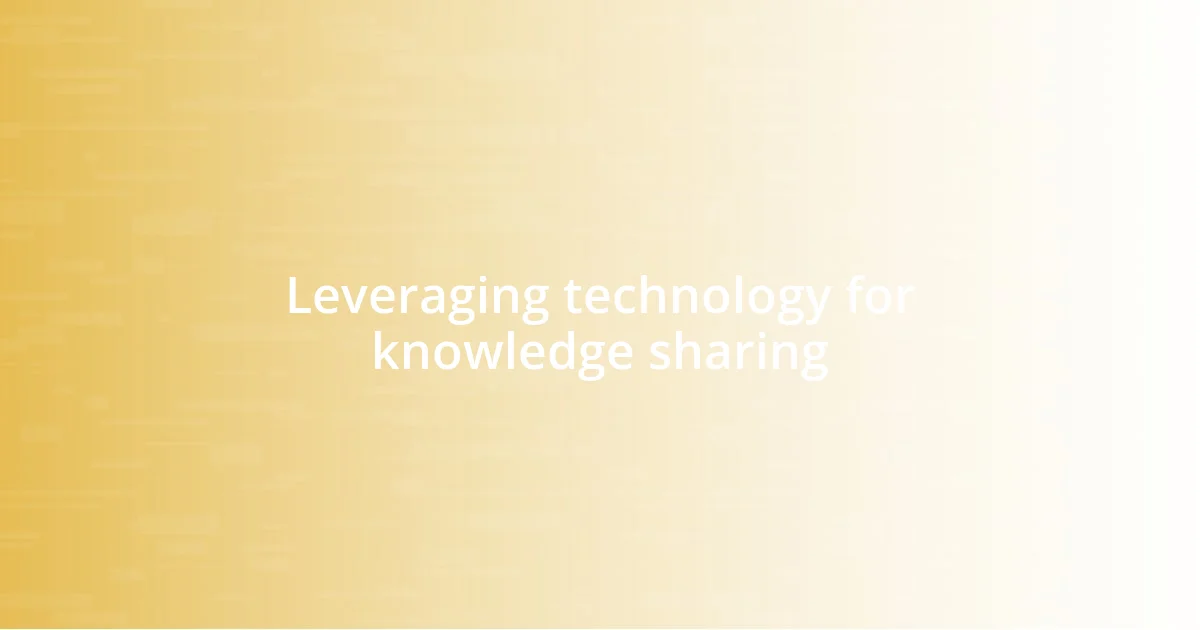
Leveraging technology for knowledge sharing
Leveraging technology in knowledge sharing has transformed the way we connect and collaborate. I remember attending a virtual conference where the chats and discussion boards became lively spaces for sharing insights in real-time. It was fascinating to observe how technology not only facilitated participation but also ignited conversations that wouldn’t have happened in traditional settings. Have you ever experienced that electric feeling in an online forum, where collective brainstorming just flows effortlessly? It’s a reminder that digital platforms can create a sense of community that transcends physical boundaries.
The use of collaborative tools like Google Docs or Trello has been a game-changer for my team. I often think back to a project where we leveraged these platforms to share updates and resources seamlessly. Everyone felt empowered to contribute, regardless of their location. This approach instilled a sense of ownership and fostered a culture of openness. Can you imagine how much more dynamic our discussions became when everyone had equal access to knowledge and ideas? It reinforced my belief that technology, when used thoughtfully, enhances engagement and fosters mutual learning.
Moreover, I find that incorporating multimedia—like videos and podcasts—has elevated knowledge sharing to a new level. I once created a short video tutorial explaining a complex process. The feedback was amazing! Viewers appreciated the visual aspect, and it reinforced the idea that not all information has to be shared in written form. Different media resonate with different people, and I can’t help but wonder—how often do we lean too heavily on one form, missing out on the richness of varied formats? Embracing these diverse tools not only broadens understanding but also keeps the learning process fresh and engaging for everyone involved.
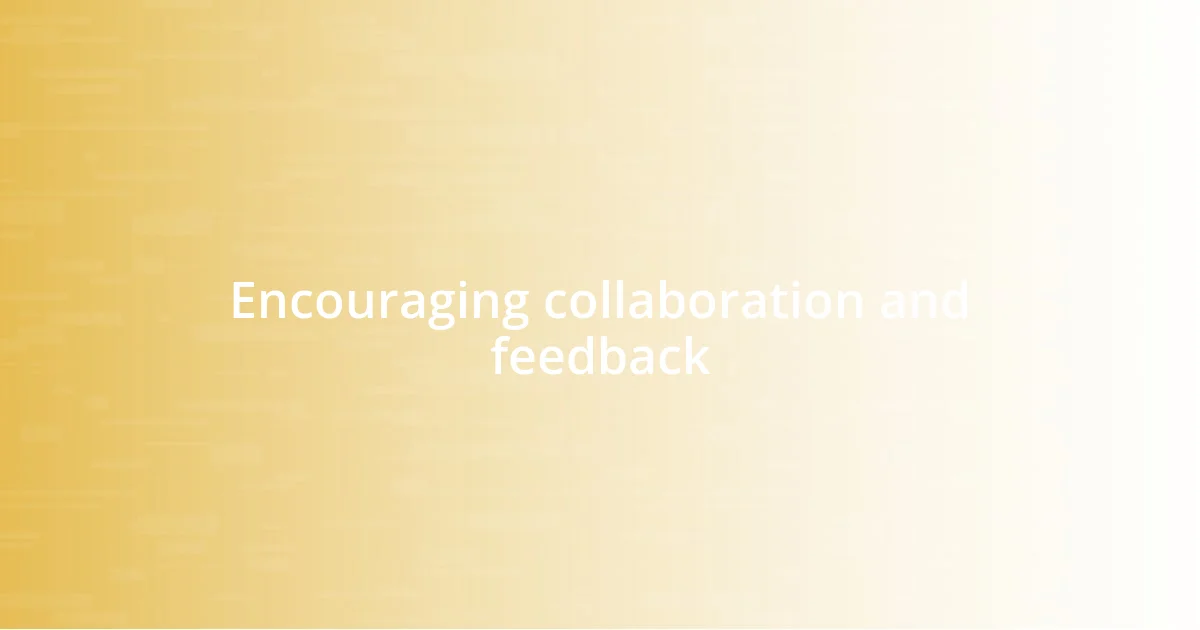
Encouraging collaboration and feedback
Encouraging collaboration and feedback is essential for effective knowledge sharing. I recall a brainstorming session where I invited colleagues to share their thoughts on a new project. Surprisingly, the room buzzed with ideas, and it became clear that simple encouragement fostered an atmosphere of open dialogue. It makes me think—how often do we underestimate the power of creating a safe space for people to express themselves?
When collaboration is prioritized, feedback comes naturally. I’ve found that using real-time polling during meetings allows everyone to weigh in without feeling intimidated. I remember one meeting where we faced a challenging decision; the anonymous votes not only made the process smoother but also opened the door for insightful discussions that might have otherwise been stifled. Isn’t it interesting how the right tools can unlock participation in ways we might not expect?
In my experience, creating a culture where feedback is both given and received with gratitude significantly amplifies learning. After implementing regular check-ins, I noticed team members became more comfortable sharing not just positive feedback but constructive insights as well. I often reflect on how crucial it is to view feedback as a gift rather than criticism. It nurtures growth and can propel us toward collaborative success. Have you ever felt that shift in perspective? It can be transformative!
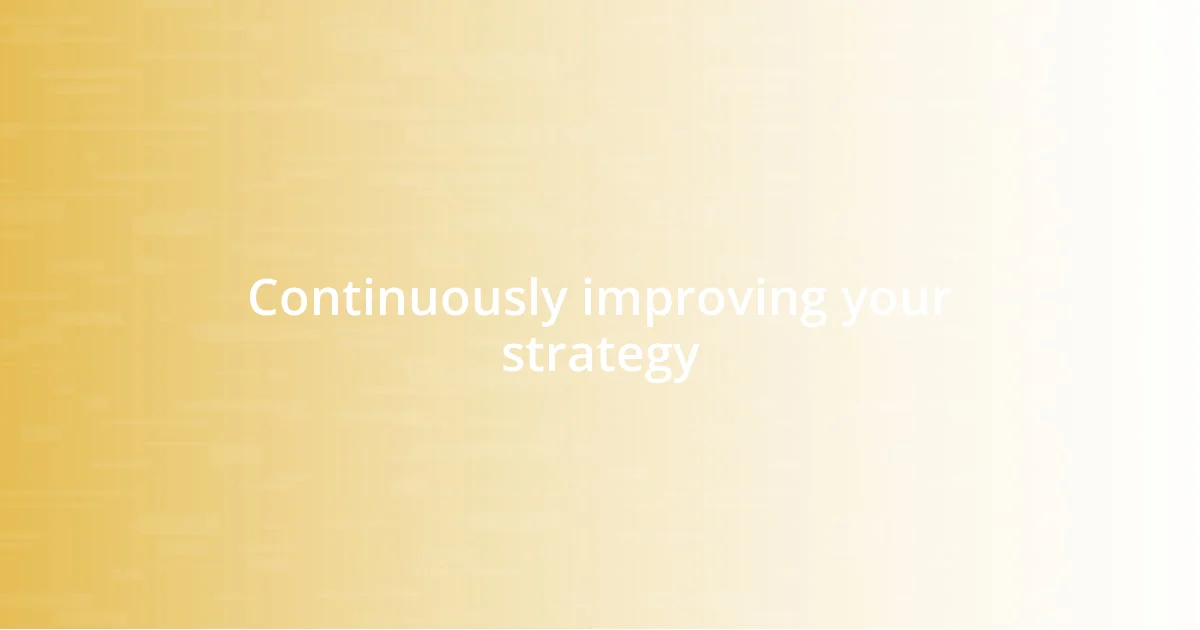
Continuously improving your strategy
Continuously refining my knowledge-sharing strategy has been a journey of growth and exploration. Recently, I took a hard look at how well my approach engaged others and where it could improve. I implemented a feedback loop—asking participants to share their thoughts post-session. The insights were eye-opening. I found that small adjustments, like varying the structure of how content is presented, made a world of difference.
I once adapted my workshops based on participant feedback and introduced breakout sessions for more intimate discussions. The shift was palpable! People seemed more comfortable sharing ideas in smaller groups. It sparked creativity in ways I had never anticipated. Have you ever noticed how a change in environment can unlock deeper conversations? It reinforced my belief that being responsive and willing to adapt is key to nurturing a vibrant learning culture.
As I continue to evolve my strategy, I’m also focused on tracking progress and outcomes. I’ve started using metrics to gauge participation and engagement levels. For instance, I noticed a decrease in attendance during long sessions, which was a wake-up call. Adjusting the length and format made a significant difference, and the renewed energy in the room was undeniable. Isn’t it fascinating how data can drive improvements? By recognizing patterns and being attentive to shifts, I believe we can create a dynamic and engaging knowledge-sharing environment that truly resonates with everyone involved.










